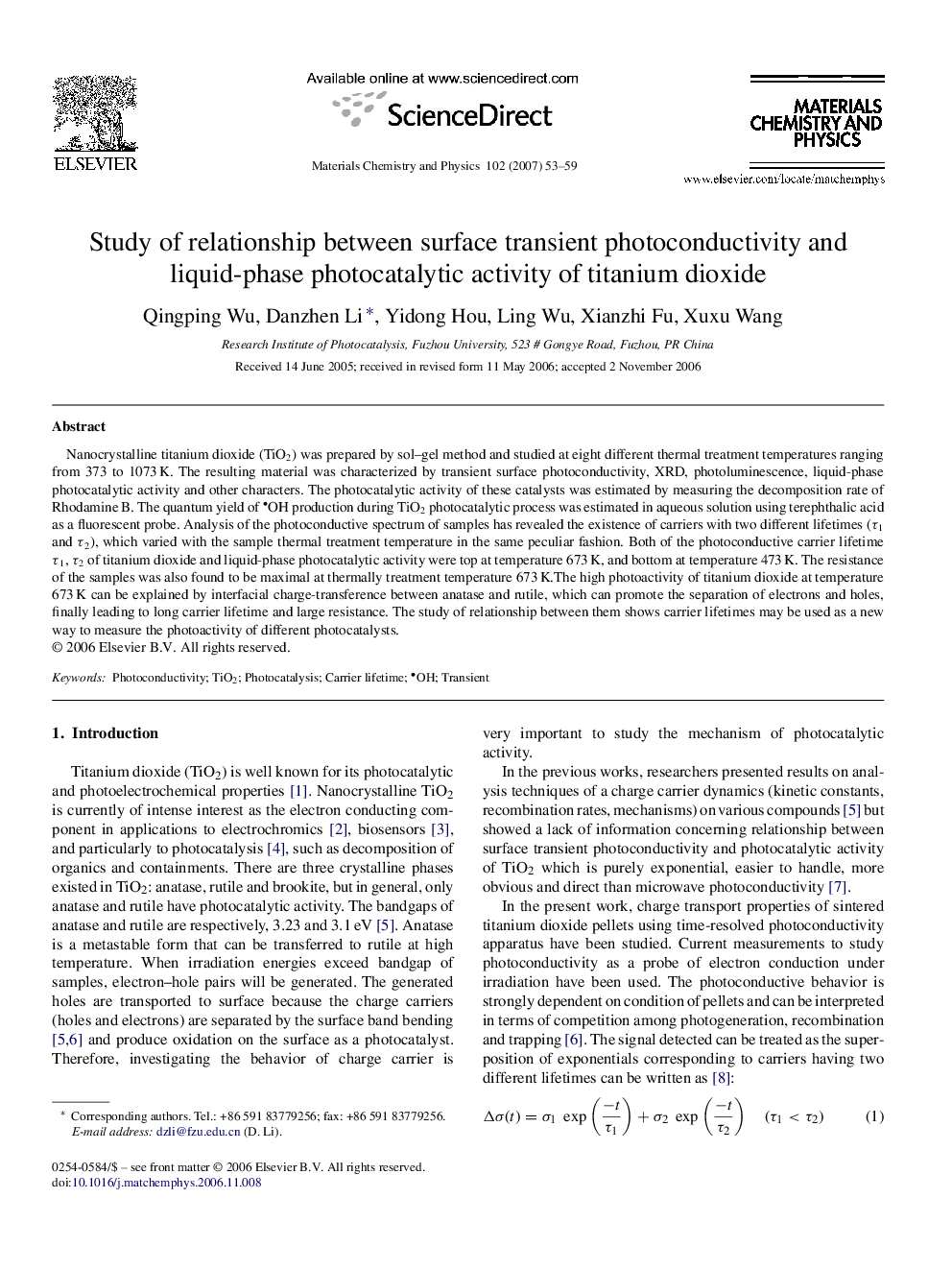| Article ID | Journal | Published Year | Pages | File Type |
|---|---|---|---|---|
| 1528135 | Materials Chemistry and Physics | 2007 | 7 Pages |
Nanocrystalline titanium dioxide (TiO2) was prepared by sol–gel method and studied at eight different thermal treatment temperatures ranging from 373 to 1073 K. The resulting material was characterized by transient surface photoconductivity, XRD, photoluminescence, liquid-phase photocatalytic activity and other characters. The photocatalytic activity of these catalysts was estimated by measuring the decomposition rate of Rhodamine B. The quantum yield of OH production during TiO2 photocatalytic process was estimated in aqueous solution using terephthalic acid as a fluorescent probe. Analysis of the photoconductive spectrum of samples has revealed the existence of carriers with two different lifetimes (τ1 and τ2), which varied with the sample thermal treatment temperature in the same peculiar fashion. Both of the photoconductive carrier lifetime τ1, τ2 of titanium dioxide and liquid-phase photocatalytic activity were top at temperature 673 K, and bottom at temperature 473 K. The resistance of the samples was also found to be maximal at thermally treatment temperature 673 K.The high photoactivity of titanium dioxide at temperature 673 K can be explained by interfacial charge-transference between anatase and rutile, which can promote the separation of electrons and holes, finally leading to long carrier lifetime and large resistance. The study of relationship between them shows carrier lifetimes may be used as a new way to measure the photoactivity of different photocatalysts.
